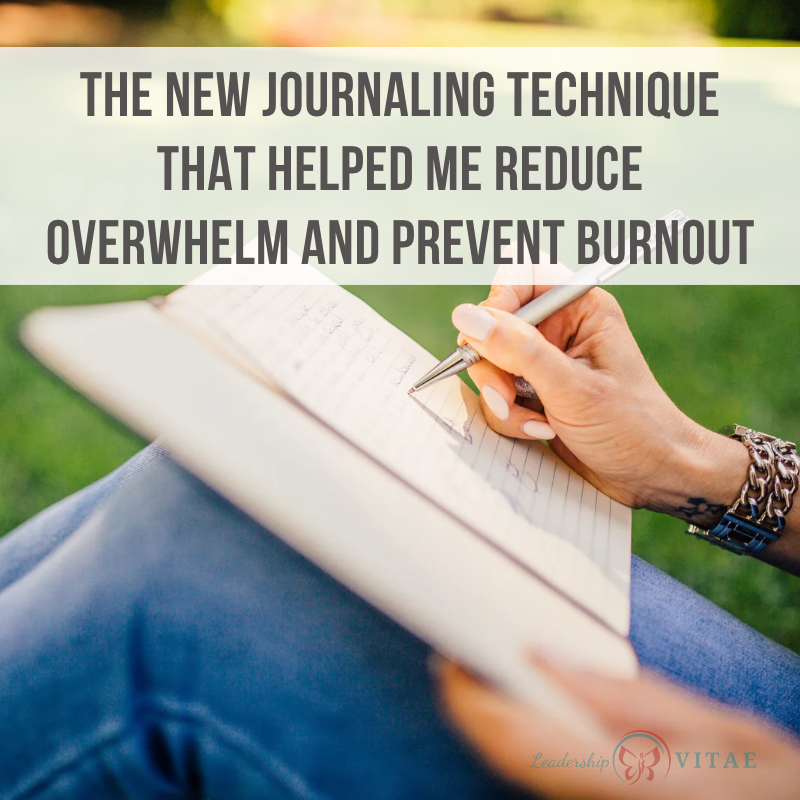
In January, life was a bit chaotic. While change is what I do for a living, and living with a teen can be a bumpy road, there was a lot more going on than what I’m usually managing.
I made the decision to move so my son could attend a high school better suited for his pursuits and rent out my old house until I could come back in a few years. Because I didn’t have enough to do and becoming a landlord sounded fun <insert sarcasm here>.
While the biggest parts of the move were handled quickly, I found that the “small stuff” was piling up and threatening to drown me. At the same time, we had a reorganization going on at work that was challenging and I was trying to finish my coaching program. Did I mention I was also prepping for a leadership retreat?
The list kept growing, and the feeling that I was underwater was getting worse day after day. Fortunately, part of the coaching program is peer coaching. I met regularly with two different coaches as we were being evaluated for graduation.
As a coach, we are encouraged to have one ourselves. This allows us to put our struggles into perspective and do this whole adulting thing while also having the space to support our clients. As a coach – who is also a leader, mother, and human trying to navigate regular disruption – having a coach has more value than I can express.
An idea worth trying
It was in one such session that I lamented about the “small stuff.” As someone with ADHD, to-do lists are normally not particularly helpful. I have tried endless journals, templates, and processes and they never last more than a week or two.
During the conversation, I had an idea to test out. It was another journaling approach, but I was desperate enough to try anything. I could sense burnout on the horizon. At that point, I still had so much going on and couldn’t make it until May when things would theoretically settle down. I needed help right then.
My expectations were relatively low and I didn’t expect the idea to bear much fruit. Yet within 2 weeks my sense of overwhelm lifted and I’ve been using it for months to keep me moving forward when life threatens to knock me over.
It’s a relatively simple but powerful process and only takes a few minutes once a week. Fortunately, impactful doesn’t always have to be complex or time-consuming. There are two key parts – the state of my life and next best actions.
The state of my life
Each Monday morning, before the day gets away from me, I reflect on the state of my life. It began with an inventory of all the things going on, which took up a full page. Each time I thought I was done, I’d think of something else I was on the hook for.
Turns out, not only did I have everything I shared earlier going on, but I also volunteered for some special projects at work. They are passion projects that keep my energy up, but when I’m underwater, some aspects of them were feeling like more work pressing down on me.
I kept adding and adding to the list.
Each week, I’d start fresh, reflecting on where I was. Given my health concerns, I’d be sure to include insights on my eating, workouts, and sleep. My son was really struggling in January and February, so insights into what was going on with him were important. Friendships and family relationships…there were all sorts of things to consider that were outside the work and moving commitments.
No wonder I felt like I was drowning.
Know your buckets
As the weeks went on, I started sharing the process with others. Since my life is different from others’ and we have varying pursuits and life interests, I decided to develop standard buckets for assessment.
These are a modified version of the wheel of life and can be further modified to fit the unique needs of the person.
- Heart
- Mind
- Body
- Spirit
- Home
- Family
- Work
By having standard evaluation areas, it helped me identify where I may be deprioritizing something important. While it’s insightful to know what’s pulling at us, it’s equally critical to know where we might be ignoring an area that would prove beneficial.
In my case, my writing fuels my spirit and is one of the first things I deprioritize (no matter how many times I remind myself of its importance). With this list, it forces me to think about what I’m doing to fuel all parts of me, and not continually prioritize others at my expense.
Celebrate the wins
After a few weeks, I noticed I was feeling lighter. The list was getting easier and made me feel better. Why? Because I was also including the wins. Successes week to week, like getting portions of my coaching program completed.
The wins were critical in showing progress and allowing me to celebrate accomplishments. Frequently we focus on gaps or what’s yet to be done and forget the wins along the way. This process slowed me down at least once a week to not just see what’s ahead, but reflect on successes.
When we take time to reflect on the various areas of our lives, it may be tempting to only consider the gaps, unmet commitments, or goals we haven’t yet achieved. By doing this process weekly, we can also consider what we’ve been able to accomplish and pause to celebrate the wins.
Even small wins can provide a big boost to keep us going when things feel difficult.
Next best actions
The state of my life was part one of the weekly process. The second was to develop a list of next best actions.
When I looked at all the things I needed to do, it was quickly overwhelming. Instead of thinking of the complete task that needed to be done, I identified one next best step for each bucket.
For example, for family, I had to worry about my son and getting him set up for the new school year. Having gone through registration before, I knew it would involve a lot of time-consuming steps. Since I had a few, each week I’d put one step on the list. The first was to look up the registration requirements. The next week was to collect the paperwork listed in the requirements. I kept going weekly until the process was done.
The gift of breaking down our work
Identifying one next best action, such as looking up the requirements, gave me two gifts.
The first was to make it easy to make progress. I committed each day to spending 15 minutes addressing one thing on my list. Some of them only took a few minutes, so the sense of accomplishment often gave me the energy to tackle something else.
The other gift was allowing me to consider whether it was something I needed to do or if I could ask for help. My company has a concierge service, so recently I asked them to find a mechanic in my area to work on my truck. I still need to get the truck there, but they saved me time calling around.
When I started, I used to fill the entire page with next best actions. Now, I have about 5 or 6 each week. Each Monday I start with a fresh blank page and resist the temptation to look at prior weeks. I’m prioritizing what is important now and if something didn’t get done, I’ll worry about it when it becomes pressing.
Simple can be powerful
What started out as a vague idea has become a weekly habit. Through months of work and home chaos, it has been key to sorting through what’s going on and making progress without feeling overwhelmed. The burnout that was threatening has been kept at bay through small steps, celebrating wins, and asking for help where I can.
Sometimes, a simple method can have a powerful impact on our lives. So has been the case with this journaling technique. If you’ve ever found yourself overwhelmed by life’s demands, what methods have you used to help? Please include your thoughts in the comments with your suggestions or any feedback on the approach I’ve shared.








